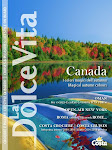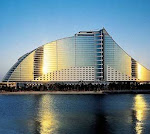Discover Quebec City by passing through Charlevoix and heading towards the new frontier of Canadian tourism: Nova Scotia.
It has one of the lowest population densities in the world. It has three inhabitants per square kilometre (the world average is 48; in Europe, for comparison, Italy hovers around 200). And those three inhabitants will in all probability be of different ethnic origin. Canada is a model of integration: since the 1970s it has been successfully integrating immigrants from all over the world, who today represent many of the 33 million Canadians and who have settled mainly in the belt along the border with the US. The peaceful coexistence of languages, cultures, religions, medicines and customs is impressive, as is the harmony between technological progress and environmental conservation.
With a population of 600,000, Quebec City is the most European of all Canadian cities and the second largest in Quebec, a Francophone province 40 times larger than Switzerland. The city moves to a slow beat and it has fortifications, lending it a medieval air. Last year it celebrated its 400th anniversary, and today you can enjoy the quadricentennial memorials by walking along the Promenade Samuel de Champlain, two kilometres of green pathway following the Saint Lawrence river, or seeing the de Tourny fountain in front of Parliament. The old city must be explored on foot to understand why UNESCO listed it as a World Heritage site. Start near the Place de Paris and dive into the Petit Champlain pedestrian-only area with its shops, markets, and open-air cafés serving tarte au sucre d'erable (maple syrup cake). Alternatively visit the old quarter of Saint Roch, popular with artists and designers, or the Vieux Port (old port) with its antique shops. Not far from the city are three fascinating sightseeing destinations: the idyllic, rustic island of Orléans with its windmills, art galleries and Norman-style cottages; the Montmorency waterfalls, higher than Niagara Falls; and the religious park of Saint Anne de Beaupré.
Coming back up the Saint Lawrence River you discover the Charlevoix region, which has inspired countless artists with its spectacular scenery. The valley was formed from a crater made by a prehistoric meteorite, and today it is a UNESCO Biosphere Reserve. This area attracts whales (blue, humpback, and Beluga) and seals, but not dolphins or sharks. The main observation point is Tadoussac: the name in the aboriginal language (Ilnu) means "breast", and it is here that huge concentrations are found of the plankton that provides food for the whales. This is the access point to the Saguenay fjord, which leads to Lake St. Jean. The river runs for miles across marine parks, animal reserves, and dunes and cliffs up to 400 metres high, creating a truly unique landscape. Cruise ships stop at Saguenay, which is divided into three arrondissements (quarters): Chicoutimi, Jonquière and La Baie. La Baie is the most attractive, and contains the Fjord Museum where you can find out more about the flora and fauna of the area. La Baie is also the starting point for a number of different excursions: in ten minutes you can be at Rivière à Mars, where you can see brown bears, and an hour and a half away is Saint Félicien, where polar bears and moose live in their natural habitat. Not far off is Ha Ha Bay, with its intriguing pyramid built from thousands of road signs. In Chicoutimi you can walk around the port area (pedestrian only) and the buildings that make the town the capital of cellulose production.
Further to the east is Nova Scotia, founded by British colonists. This is the new frontier of the Canadian tourism industry: 7,400 km of coastline, cities and fishing villages that are still as they were in the early twentieth century, not to mention the lobster restaurants. Halifax, with one of the biggest ports in the world, is the regional capital. It is modern and cosmopolitan, but it has an interesting old town centre (check out the Georgian-style Province House, the nearby Art Gallery of Nova Scotia housed in an 1868 building, St Paul’s Church, Canada’s first Protestant church, and, facing it, the Victorian town hall from 1890). The film Titanic was shot here, and the Maritime Museum has exhibits from the real ship. Further along (43 km) is the iconic fishing village: Peggy’s Cove, population 60, with pastel-coloured houses and a lighthouse often enveloped in fog.
Cape Breton Island is the biggest island in Nova Scotia. Wind-beaten and primitively beautiful, it is graced with green hills and long beaches. The only real city on the island is Sydney (pop. 26,000), the hub of the coal district. Not far away is Baddeck, on the Bras d’Or lake, which, together with the Alexander Graham Bell museum, are two equally interesting destinations.
Canadian provinces correspond to US states. The smallest is Prince Edward Island, (capital Charlottetown, pop. 33,000), founded in 1763. Colonial and Victorian styles, tree-lined avenues, and huge silences from September to June: the whole island is a postcard from a far-off world in a far-off time, where the country roads and English country villages still evoke the novel Ann of Green Gables by L.M. Montgomery, which was written here at the beginning of the twentieth century and which has been made into a television series.
Thursday, May 7, 2009
Subscribe to:
Post Comments (Atom)














No comments:
Post a Comment